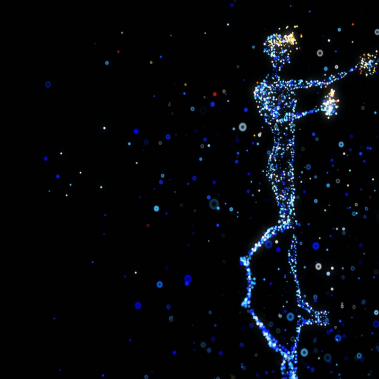This article was first published by Metaverse Musings here.
Big tech layoffs, Meta Platforms Inc’s volatile valuations, and conflicting data on daily active users on Decentraland and The Sandbox have led many to ask, “is the Metaverse dying?”
This question reflects a misunderstanding of what the Metaverse is.
The Metaverse is not just a virtual world or a tech platform separate from our physical world.
The “Metaverse” refers to an emerging reality where financial value exists not just in our physical world but also in digital and “phygital” worlds. Two new phenomena are unlocking new commercial value:
- Blockchain technology has enabled buying and selling of digital assets.
- The convergence of numerous existing and new technologies is powering three-dimensional, “phygital” experiences.
Buying and selling digital assets is possible with blockchain technology
Historically, companies launched lines of business around physical assets (e.g., cars). Today, companies – including Nike, Time Magazine, Budweiser, and McLaren – are launching lines of business around digital assets (e.g., NFT car collectibles).
In the past, it did not make sense to buy/sell digital images when they could be easily copied, pasted, modified, and deleted by others.
Blockchain technology is a digital record-keeping system where once recorded, data can practically be immutable (e.g., cannot be modified or deleted). This applies to data such as unique identification codes attached to JPEGs, commercial transaction histories, and proof of ownership.
With the technological capability to record, track, and verify data ownership, buying and selling digital assets is now possible. Blockchain technology has enabled buying and selling of digital assets as end products. Digital assets include non-fungible token (NFT) collectibles and cryptocurrencies. The NFT art and collectibles industry already represents a multi-billion-dollar market. Globally, NFT transactions totaled more than $17 billion in 2021.
“Phygital” is an emerging world alongside physical and digital realms
“Physical” and “digital” realms are becoming one and inseparable, creating a new category of “phygital.”
The increasing convergence of physical and digital realms has been an everyday phenomenon since the internet was invented. But until recently, “physical” people, experiences, and things were three-dimensional, whereas “digital” versions were primarily two-dimensional, accessed via laptops and phones – except for the occasional pay-to-experience virtual reality (VR) game.
With the Metaverse, “digital” people, experiences, and things are becoming three-dimensional too. When the “physical” and “digital” realms intertwine in three-dimensional form, it becomes almost impossible to say where one ends and the other starts. This emerging reality is powered by the convergence of numerous existing and new technological advancements, including:
- Reducing latency, the time it takes to transmit data (e.g., 5G technology, edge computing);
- Creating three-dimensional digital representations of existing and imagined places (e.g., 3D reconstruction, spatial data)
- Building digital environments that can interact with us in real-time (e.g., generative artificial intelligence, machine learning)
- Enhancing capabilities of underlying material products (semiconductors, Graphics Processing Units).
We are currently in a transitional period between a world where two-dimensional screens are normalized and a world where three-dimensional mixed reality is normalized.
A new “phygital” realm of people, things, and experiences is emerging. Examples include holographic avatars that talk and move directly based on what our physical selves do wearing AR headsets and haptics suits, Augmented Reality (AR) enabled GPS systems that superimpose digital signposts onto physical streets, and virtual try-on services for physical apparel.
Three ways companies are unlocking commercial value in the Metaverse today
Market leaders across numerous industries are already commercializing the Metaverse today by:
Launching digital products as end products: Companies are building lines of business around digital and phygital assets. For example, Nike has generated close to $200M in revenues since launching their virtual Nike kicks line of business in Q4 2021. Virtual real estate NFTs are another example: Plots of digital land on platforms such as Decentraland and The Sandbox are being bought and sold in the form of NFTs — sometimes for many millions of dollars.
Engaging Customers and Clients Via AR/VR: Companies are selling their products and providing services on AR/VR platforms, reaching and servicing customers more efficiently than they could with physical world limitations. Real estate firms are using VR to provide live tours of homes and visualization of pre-construction homes. Firms are also using VR to virtually stage homes, reducing the hefty costs of physical home staging.
Leveraging Digital Twins to Improve Physical Counterparts: Companies are creating synchronized, 3D replicas that reflect real-time changes to their physical counterparts. 3D digital twins can provide an end-to-end view of large and complex systems in the physical world and can help design, test, and proactively identify potential issues in their physical counterparts. In real estate developments, digital twins are being programmed to reflect the real-time status of buildings during construction and construction sites, allowing for close monitoring and proactive management.
Regulatory clarity and further technological advancements are needed to unveil a fully formed Metaverse
There needs to be more regulatory clarity around how digital assets will be treated. Emerging regulations may significantly impact the business case of buying and selling certain kinds of digital assets. For example, the European Union’s Markets in Crypto-Assets (MiCA) bill provides a landmark regulatory framework for digital assets such as cryptocurrencies, NFTs that represent digital art and collectibles, and NFTs that represent physical world services and assets. The EU is expected to vote on the MiCA bill this April. In the US, there is still a lack of clarity around whether certain cryptocurrencies are considered securities.
The ‘Phygital’ Realm Is Rapidly Emerging but Not Yet Fully Formed
Further technological advancements are needed, including:
Improved Augmented Reality and Mixed Reality (MR) platforms: AR refers to experiences where our physical world is enhanced with digital overlays. MR refers to a further immersion of physical and digital realms, where both physical and digital worlds are superimposed onto each other, generating a mixed, three-dimensional “phygital” world. AR and MR are significantly different from VR — while VR also offers three-dimensional experiences, it is limited to digital-only experiences that are not connected to our physical world.
Today’s platforms popularly associated with the Metaverse — including Decentraland and The Sandbox — primarily offer digital experiences via two-dimensional computer screens or via VR technology. Some VR platforms still offer highly pixelated, underdeveloped user experiences. AR platforms are being developed. NVIDIA’s Omniverse platform, for example, delivers some limited AR functionality through CloudXR. These platforms reflect that we are still in a transitional period during which physical and digital worlds are beginning to converge completely but not yet seamlessly immersed at scale.
Affordable AR/MR glasses and haptics wearables: To access our physical world, we rely on our five senses. To access the internet, we use two-dimensional devices such as computers and smartphones to see and hear sounds. To access phygital assets and experiences, we will use devices like AR/MR glasses and haptics wearables to simulate all five senses. Haptics wearables enable us to simulate touch, smell, and taste from digital experiences.
Many tech companies, such as Microsoft and Magic Leap, have launched AR headsets. Microsoft’s HoloLens 2 costs $3,500, and Magic Leap 2 costs $3,299. Apple is expected to launch its first MR headset later this year at an initial price of $3,000. These prices are likely too high for the average customer. With further technological advancements, prices will likely come down. The availability and affordability of personal computers were critical components to commercializing the internet, through which we experienced digital realms in two-dimension. Similarly, the availability and affordability of AR/MR devices and haptics wearables will be key to commercializing the Metaverse, through which we experience physical, digital, and phygital realms in three-dimension.
We are living through the emergence of a new reality
The Metaverse is not dying — it is simply in the process of forming. We are currently in a transitional period between a world where two-dimensional screens are normalized and a world where three-dimensional mixed reality is normalized.
In this transitional period, many companies are already unlocking commercial value from digital assets and phygital experiences. A world where physical, digital, and phygital realms co-exist in our everyday lives is steadfastly emerging.
This document was prepared solely for the use of Marsh McLennan for limited external distribution to Marsh McLennan clients, and it is the sole property of its copyright owner. Further distribution of the content (in whole or in part) in any form is prohibited without express written permission from the copyright owner. © 2023 Jeong Min (Jaymin) Kim. All rights are reserved.



